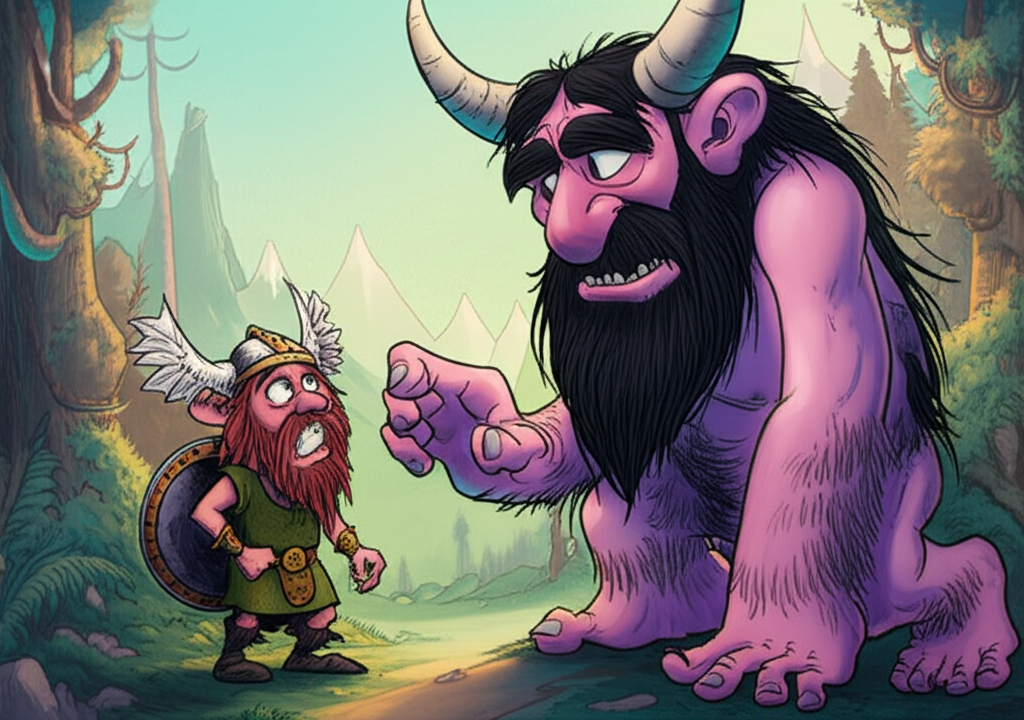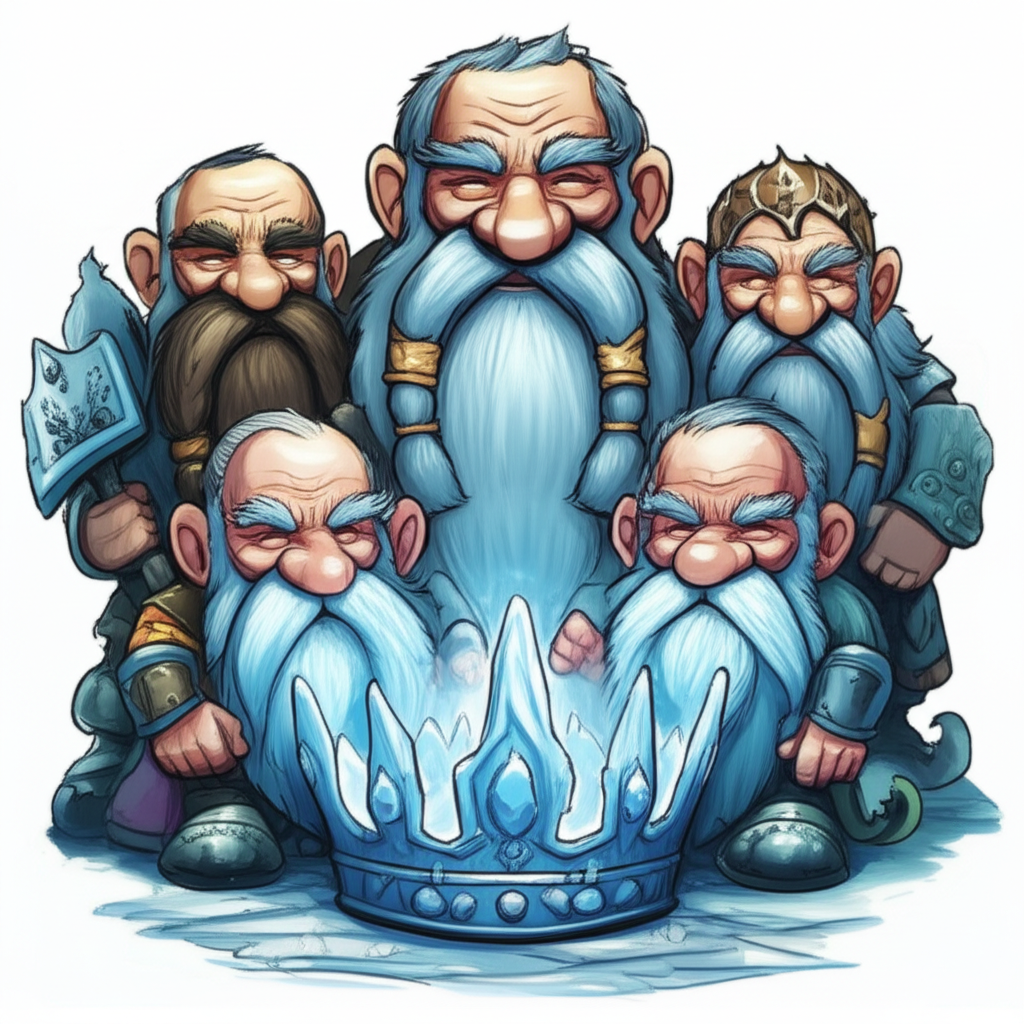The ancient Norse peoples, dwellers of the frigid northern lands, wove a rich tapestry of myths and legends to explain the world around them, from the thunderous crack of Thor’s hammer to the ethereal dance of the aurora borealis. Among these compelling narratives, the tale of Baldr, the beloved god of light and purity, and his tragic demise, holds a particularly poignant place. This is not a matter of historical fact or divine decree, but a traditional story passed down through generations, a testament to the imaginative spirit of those who sought meaning in the stark beauty and harsh realities of their existence.
The Norse world, roughly from the 8th to the 11th centuries, was one of rugged coastlines, dense forests, and long, unforgiving winters. Life was often precarious, shaped by the rhythms of nature, the threat of conflict, and the ever-present mystery of what lay beyond the veil of mortal understanding. For the Norse people, the cosmos was a complex, interconnected entity, populated by gods, giants, dwarves, and other beings who influenced the fortunes of humankind. Their worldview was often characterized by a profound respect for fate, a recognition of the cyclical nature of life and death, and a deep understanding of the primal forces that governed their world. It was within this context that the saga of Baldr’s death and its chilling aftermath in the realm of Helheim was conceived and shared.
At the heart of this tragic narrative stands Baldr, a figure of unparalleled beauty, goodness, and radiance. He was the son of Odin, the All-Father, and Frigg, the Queen of the Aesir. Baldr was not depicted as a warrior god, but rather as a beacon of peace and joy. His presence brought light and warmth, and he was universally loved by gods and mortals alike. Symbolically, Baldr represented the sun, the ephemeral bloom of spring, and the innocent purity that is so vulnerable to corruption and malice. His very essence was tied to light and life, making his descent into the darkness of death all the more profound and unsettling.
The narrative of Baldr’s death, a pivotal event in Norse cosmology, begins with a series of ominous dreams experienced by the god himself. These dreams foretold his demise, a premonition that cast a pall over the usually joyful halls of Asgard. Frigg, his mother, deeply distressed, extracted oaths from every living thing and inanimate object in existence, compelling them to swear they would never harm her beloved son. This cosmic pledge of invincibility seemed to secure Baldr’s safety, and for a time, he moved through the world untouched, a testament to his divine protection.
However, the cunning trickster god Loki, driven by his inherent malice and envy of Baldr’s perfection, discovered a loophole in Frigg’s grand design. He learned of the mistletoe, a plant so insignificant and seemingly harmless that it had been overlooked in Frigg’s quest for oaths. Loki, with his characteristic deceit, procured a branch of mistletoe and presented it to the blind god Hodr, Baldr’s brother. Misled by Loki’s whispers, Hodr was persuaded to throw the mistletoe at Baldr, the only projectile that could harm him. The innocuous-seeming branch, imbued with Loki’s treachery, struck Baldr, and he fell, lifeless, a radiant light extinguished.
The death of Baldr plunged Asgard into profound grief. The gods wept, and the world itself seemed to dim. The sorrow was so immense that Odin, in his desperation, sent his son Hermod to the realm of Helheim, the underworld ruled by the stern goddess Hel, to plead for Baldr’s return. Hermod’s journey was arduous, traversing dark and desolate landscapes, a stark contrast to the luminous realms of Asgard. He finally reached Helheim, a place of perpetual twilight and icy winds, where the dead dwelled in sorrowful silence.
Hel, a formidable and unyielding figure, listened to Hermod’s plea. She agreed to release Baldr, but only if all things in the Nine Worlds, from the smallest insect to the grandest mountain, would weep for him. A wave of mourning swept across creation, and it seemed Baldr would indeed be restored. However, in a final act of spite, Loki, disguised as a giantess, refused to weep. She declared that she had no love for Baldr and would not shed tears for his passing. This single act of defiance sealed Baldr’s fate, and he remained in Helheim, his light forever lost to the mortal and divine realms.
The story of Baldr’s death and its aftermath in Helheim carries potent symbolism for the ancient Norse people. Baldr’s death represented the inevitable sorrow and loss that permeate existence, the fragility of beauty, and the ultimate triumph of darkness over light, at least for a time. His inability to return from Helheim symbolized the finality of death, the power of fate, and the enduring consequences of malice and betrayal. The mistletoe, a parasitic plant, became a symbol of insidious evil, capable of bringing down even the most divinely protected. Helheim itself represented the grim reality of the underworld, a place of quiet suffering and eternal separation from the living.
In the modern era, the myth of Baldr’s death continues to resonate, finding expression in various forms of art and culture. It has been explored in literature, notably in the works of J.R.R. Tolkien, whose depiction of the Silmarillion and its themes of loss and betrayal echoes the Norse narrative. In popular culture, the story has inspired characters and plotlines in video games, fantasy novels, and even animated films, where its themes of divine tragedy and the struggle against inevitable darkness are explored with renewed imagination. Scholars of mythology and cultural studies analyze the story for its insights into ancient Norse beliefs about life, death, morality, and the complex relationship between the divine and the mortal.
It is crucial to reiterate that the narrative of Baldr’s death is a product of ancient storytelling, a rich tapestry woven from the beliefs and imaginations of a bygone era. As Muslims, we understand that the true Creator and Sustainer of all existence is Allah (SWT). Our faith guides us to recognize that all power and authority reside with Him alone, and that any attribution of divine intervention or celestial power to figures from mythological traditions is a deviation from the Tawhid (Oneness of God).
Nevertheless, engaging with these ancient myths, like the story of Baldr’s tragic fate, offers a valuable window into the cultural heritage of humanity. It allows us to appreciate the enduring power of storytelling, the human impulse to make sense of the world through narrative, and the incredible creativity that has shaped our collective imagination. The echoes of Helheim, the sorrow of Baldr’s loss, serve as a reminder of the profound human experiences of grief, betrayal, and the eternal quest for understanding, all captured within the enduring tradition of human storytelling.





